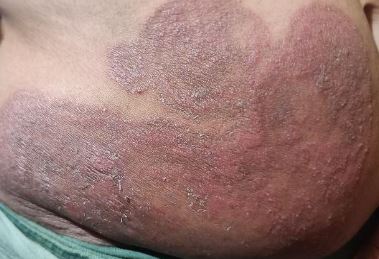An In-vitro, In-vivo and Clinical Trials of Somaraji Taila in the management of Dadru Kushta
DOI:
https://doi.org/10.21760/jaims.9.11.5Keywords:
Ayurveda, Dadru Kushta, Tinea Infection, Ringworm Infection, Somaraji TailaAbstract
Dermatophytosis has become a significant health problem affecting children, adolescents, and adults worldwide. In India 5 out of 1000 people suffer from Tinea infections. The present study evaluated the antifungal activity of Somaraji Taila in Tinea (Dermatophytosis) in Invitro & Invivo model. Cultures were brought from MTCC a government body and inoculated in SDA media under aseptic condition. Later it was subjected to microscopic and macroscopic examination to identify the organism. A sensitivity test was done using SDA media by well diffusion method, with 4 different concentrations of Hydro-Methanolic extraction of Somaraji Taila ingredients. After the incubation period, the zone of inhibition was checked and was measured in mm. As the next phase of the study, animal study was also conducted to check antifungal properties & anti-dermal toxicity on albino rat skin and conducted clinical study on 30 Diagnosed subject Dadru Kushta who were randomly allocated with 15 each in two groups. Somaraji Taila was taken for one group which was compared against widely used clinical formulation Chakramarda Taila taken as standard for local application in another group. The application was done for 14 days, and the data was collected from the subjects at baseline, 8th day (during treatment), 15th day (after treatment) and 21st day (follow-up). The assessment was based on the KASI method of grading. The results of the study showed that there was there was highly statistically significant difference between the effect of Somaraji Taila and Chakramarda Taila in Dadru Kushta.
Downloads
References
Ghannoum JA, Elewski BE. Skin care (analysis) and Health Care. 1st ed. Am J Sports Med. 2009;37:p406-18.
Kaplan W. Epidemiology and public health significance of ringworm in mankind. Acad Dermatol. 1967 Oct;96(4 ed):p204-206.
Shreekrishna GN, Bhat S. Study of common dermatoses in school children of rural area of Dakshina Kannada district, India: a cross-sectional study. Int J Contemp Pediatr. 2018. Available from: https://www.researchgate.net/publication/327224680_Study_of_common_dermatoses_in_school_children_of_rural_area_of_Dakshina_Kannada_district_India_a_cross-sectional_study.
Vaidya Jadavaji Trikamji Acharya. Sushruta Samhita, Shareera Sthana. 8th ed. Varanasi: Chawkhambha Orientalia; 2005. p. 355.
Agnivesha. Charaka Samhita with Ayurveda Dipika Commentary, edited by Vaidya Yadavji Trikamji Acharya. Varanasi: Chaukambha Orientalia; 2007. p. 451.
Sharma PV, editor. Susrutha Samhita. Vol. 2. Varanasi: Chaukhamba Sanskritasamsthana; 2003. p. 37-38.
K.R. Srikantha Murthy. Astanga Sangraha. Vol. 2. Varanasi: Choukamba Prakashan; 2012. chapter 14. p. 237.
Agnivesha. Charaka Samhita, edited by Vaidya Jadavji Trikamji Acharya. Varanasi: Chaukhambha Prakashan; 2011. Chikitsa Sthana, Chapter 7. p. 451.
Burns, Breathnach, Cox, Griffiths. Rook’s textbook of dermatology. 7th ed. Vol. 2. Oxford: Blackwell Publishing; 2004. chapter 31.19.
Pecci M, Comeau D, Chawla V. Skin conditions in the athlete. Am J Sports Med. 2009; p. 406-18.















